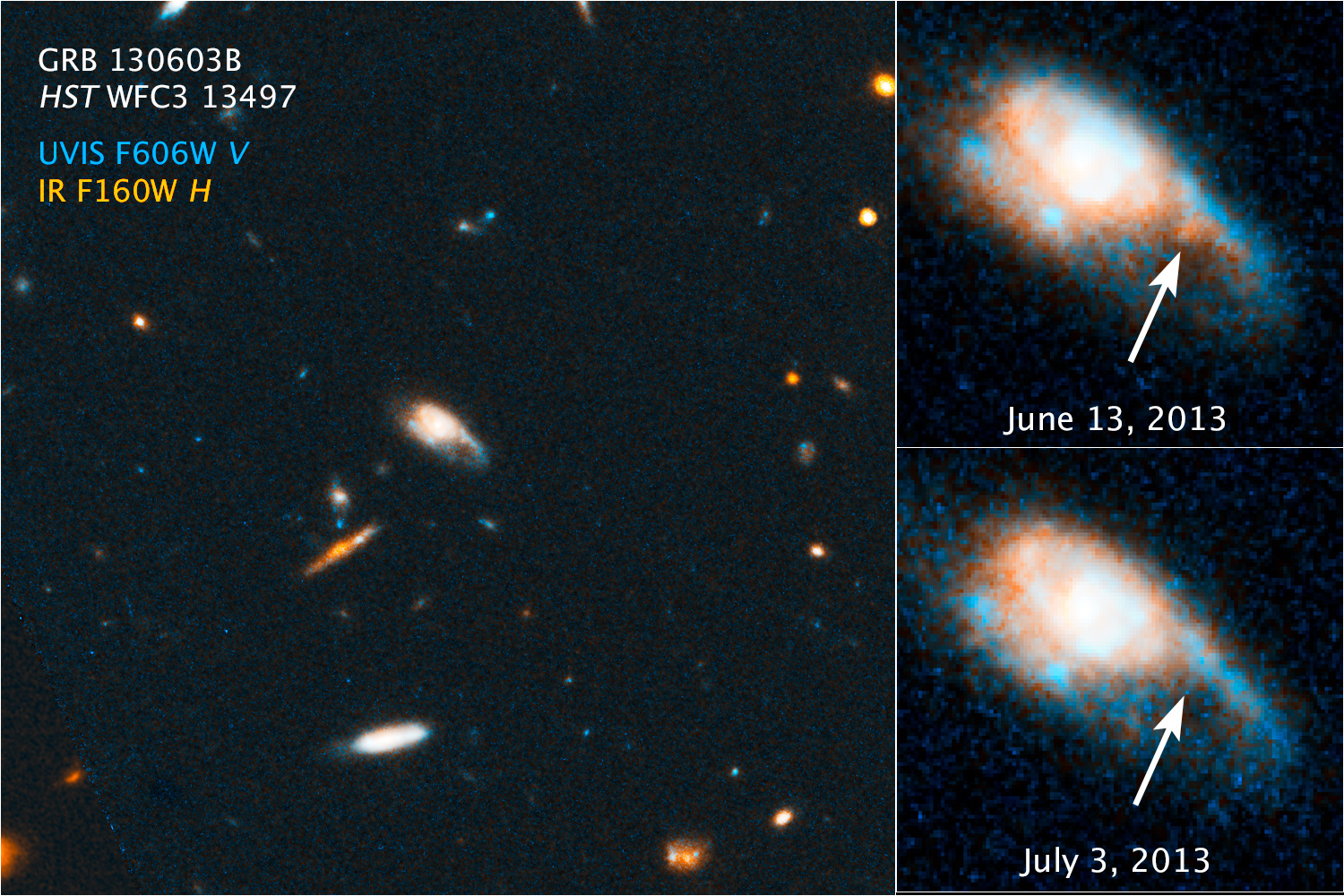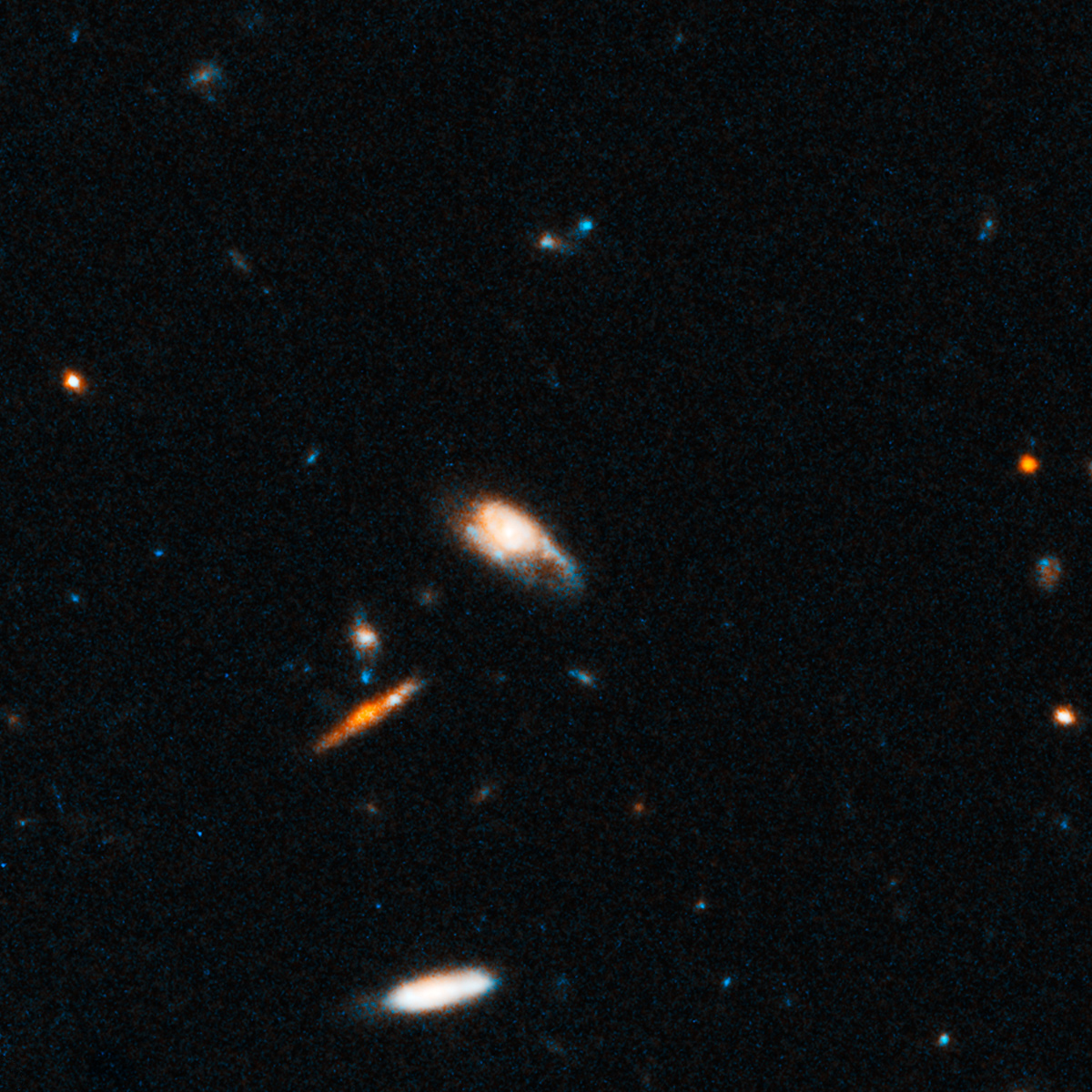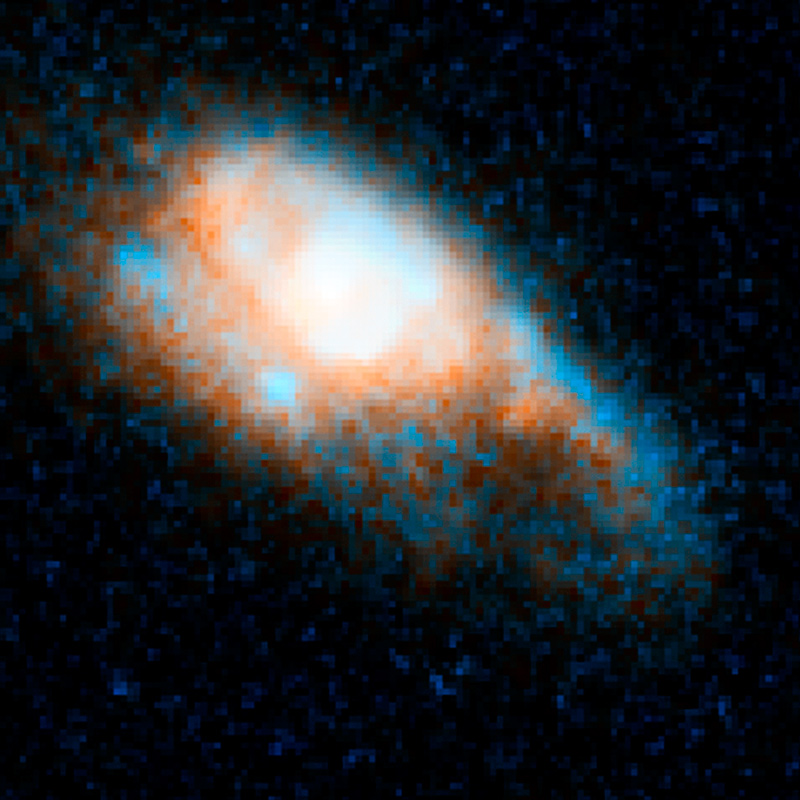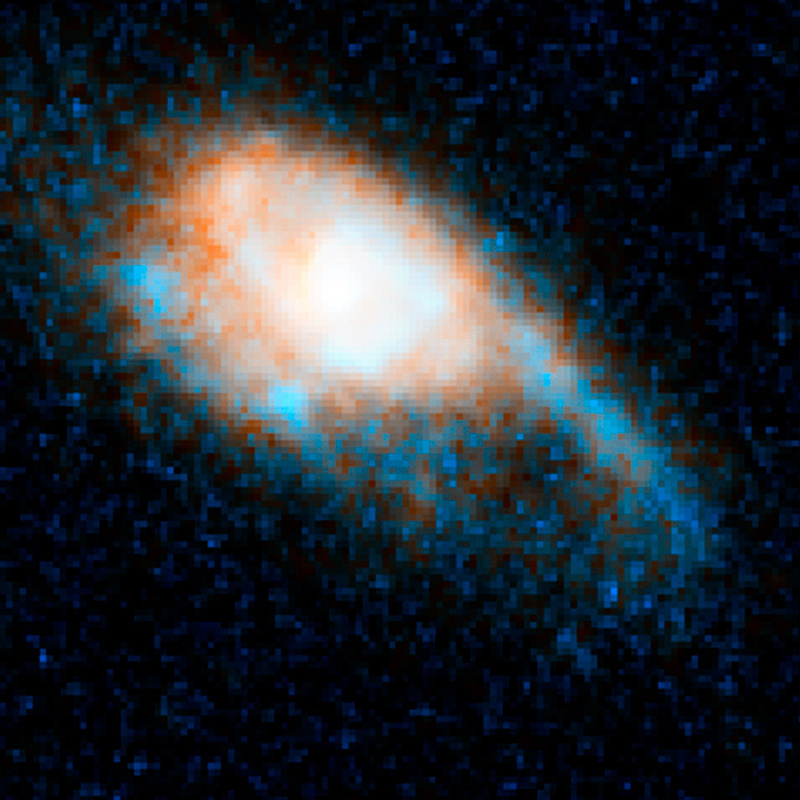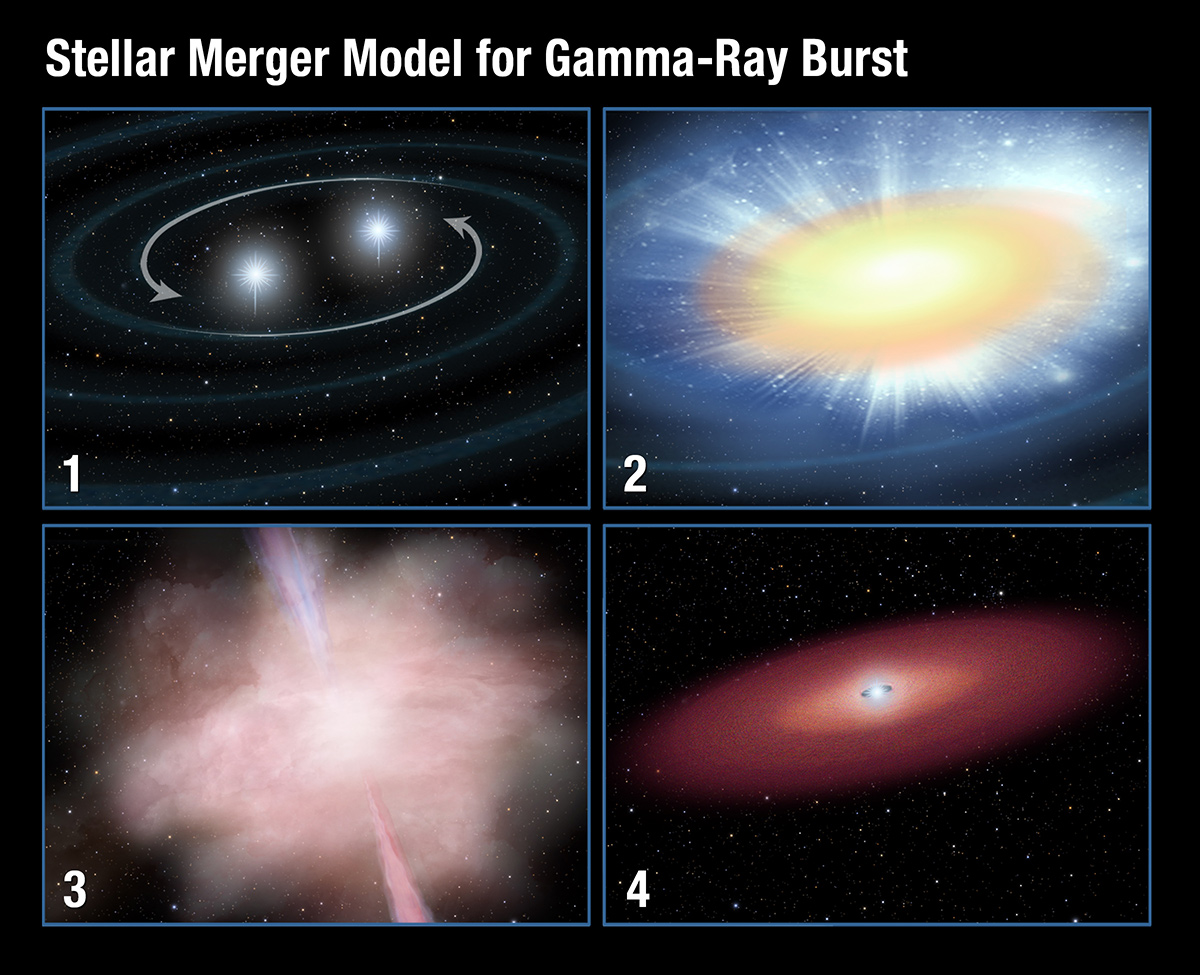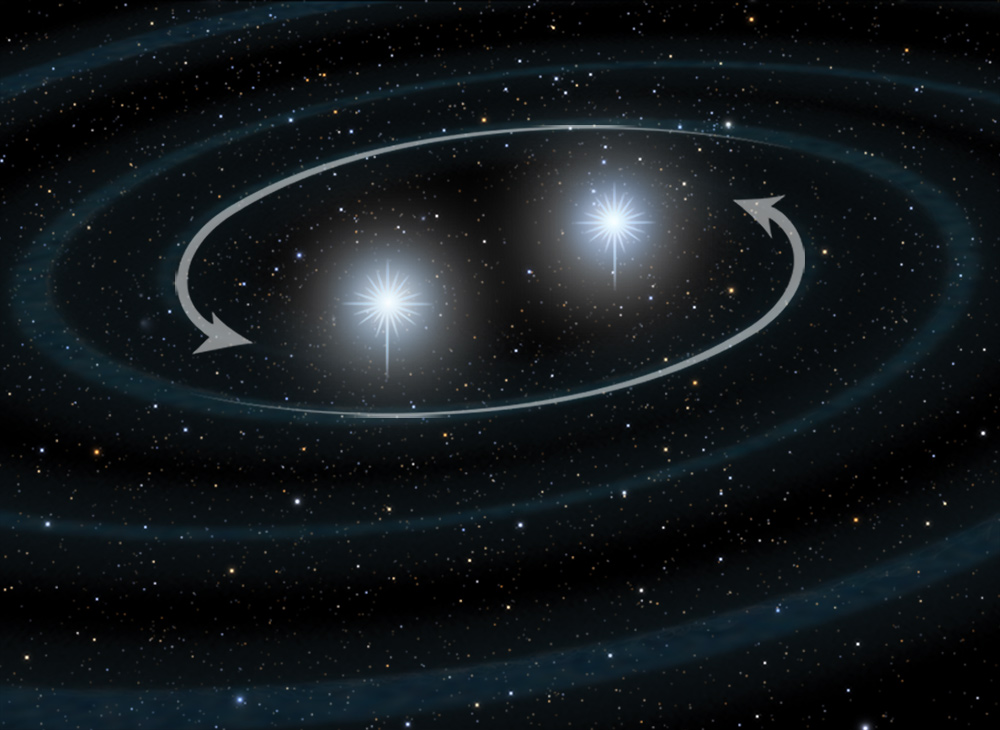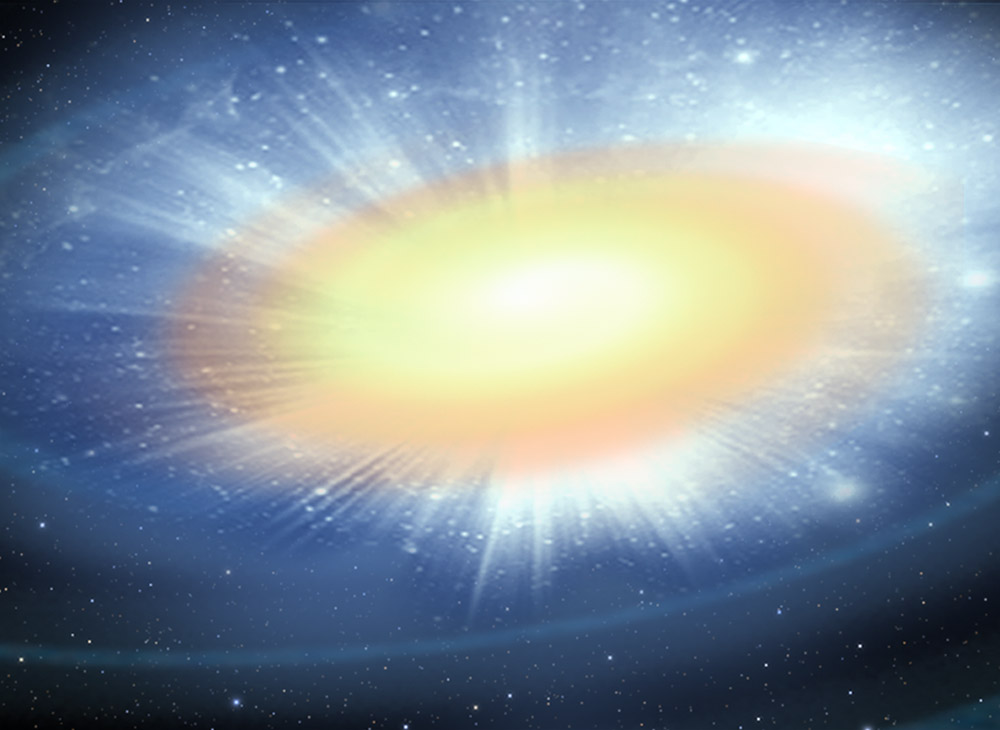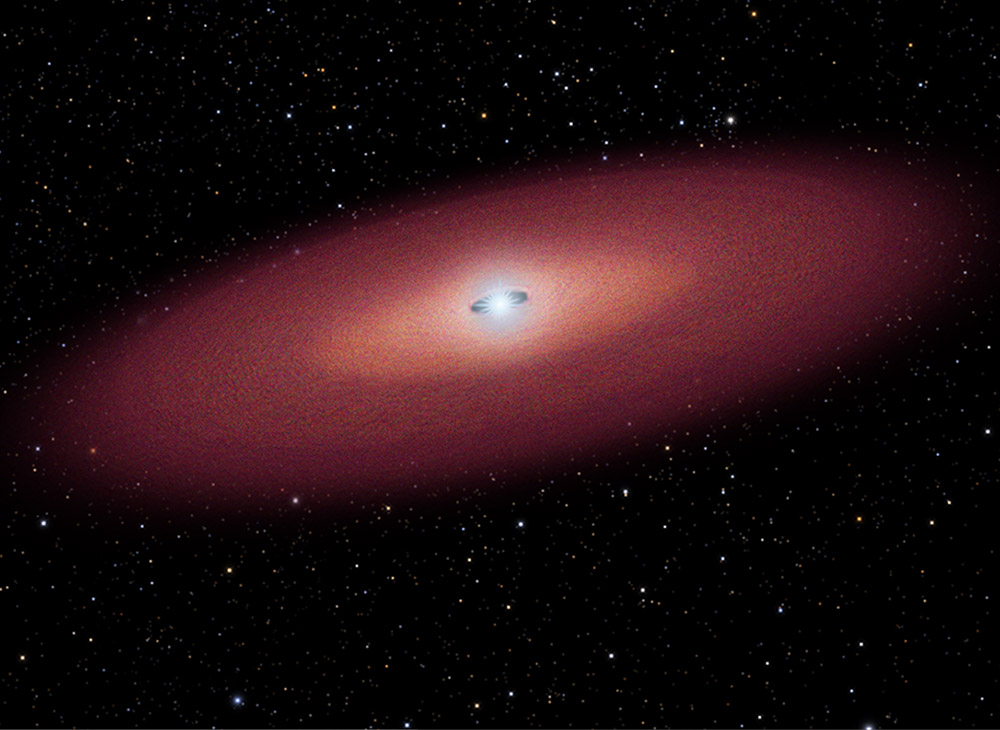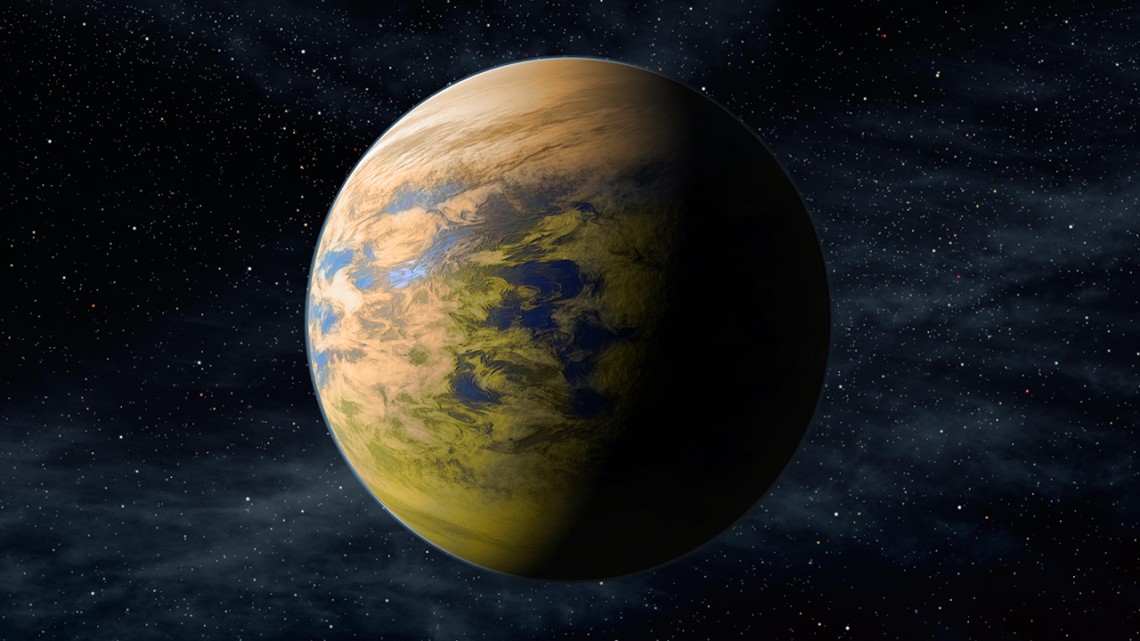Kilonova Photos: Hubble Space Telescope's Images of Cosmic Explosion
Hubble Gamma Ray Burst
These images taken by NASA’s Hubble Space Telescope reveal a new type of stellar explosion produced by the merger of two compact objects: either two neutron stars or a neutron star and a black hole. The galaxy in the center of the left image produced the gamma-ray burst, whose lingering effects were visible on June 13 but had faded by July 3. [Read the Full Story]
Kilonova Gamma-Ray Burst GRB 130603B
This wide view of the gamma-ray burst GRB 130603B shows its host galaxy and the surrounding area. The galaxy is 4 billion light-years from Earth. Image released Aug. 3, 2013. [Read the Full Story]
Kilonova Gamma-Ray Burst GRB 130603B: Before
This view of the host galaxy for the kilonova gamma-ray burst GRB 130603B was captured by the Hubble Space Telescope on June 13, 2013. Image released Aug. 3, 2013. [Read the Full Story]
Kilonova Gamma-Ray Burst GRB 130603B: After
This image of the host galaxy for the kilonova gamma-ray burst GRB 130603B was captured by the Hubble Space Telescope on July 3, 2013. Image released Aug. 3, 2013. [Read the Full Story]
Kilonova Explosion: Sequence of Events
This sequence illustrates a model for the formation of a short-duration gamma-ray burst to become a powerful kilonova explosion. Here, two neutron stars circle one another and ultimately collide to kick out highly radioactive material. This material heats up and expands, emitting a burst of light called a kilonova. An accompanying gamma-ray burst lasts just one-tenth of a second, but is 100 billion times brighter than the kilonova flash. Image released Aug. 3, 2013. [Read the Full Story]
Kilonova Explosion: Step 1
In this illustration, two ultradense neutron stars circle one another, slowly coming together in the first step toward a cosmic collision that can create a kilonova gamma-ray burst. Image released Aug. 3, 2013. [Read the Full Story]
Kilonova Collision Illustration
Two ultradense neutron stars collide to unleash a kilonova gamma-ray burst explosion in this artist's illustration. Image released Aug. 3, 2013. [Read the Full Story]
Breaking space news, the latest updates on rocket launches, skywatching events and more!
Kilonova Gamma-Ray Burst Explosion
Two ultradense neutron stars explode in a powerful, but just millisecond-brief, gamma-ray burst to spark a kilonova event in this artist's illustration. Image released Aug. 3, 2013. [Read the Full Story]
Kilonova Aftermath: Illustration
A remnant disk of debris surrounds the merged remains of two ultradense neutron stars in a kilonova gamma-ray burst, which may have collapsed to form a black hole. Image released Aug. 3, 2013. [Read the Full Story]

Space.com is the premier source of space exploration, innovation and astronomy news, chronicling (and celebrating) humanity's ongoing expansion across the final frontier. Originally founded in 1999, Space.com is, and always has been, the passion of writers and editors who are space fans and also trained journalists. Our current news team consists of Editor-in-Chief Tariq Malik; Editor Hanneke Weitering, Senior Space Writer Mike Wall; Senior Writer Meghan Bartels; Senior Writer Chelsea Gohd, Senior Writer Tereza Pultarova and Staff Writer Alexander Cox, focusing on e-commerce. Senior Producer Steve Spaleta oversees our space videos, with Diana Whitcroft as our Social Media Editor.
